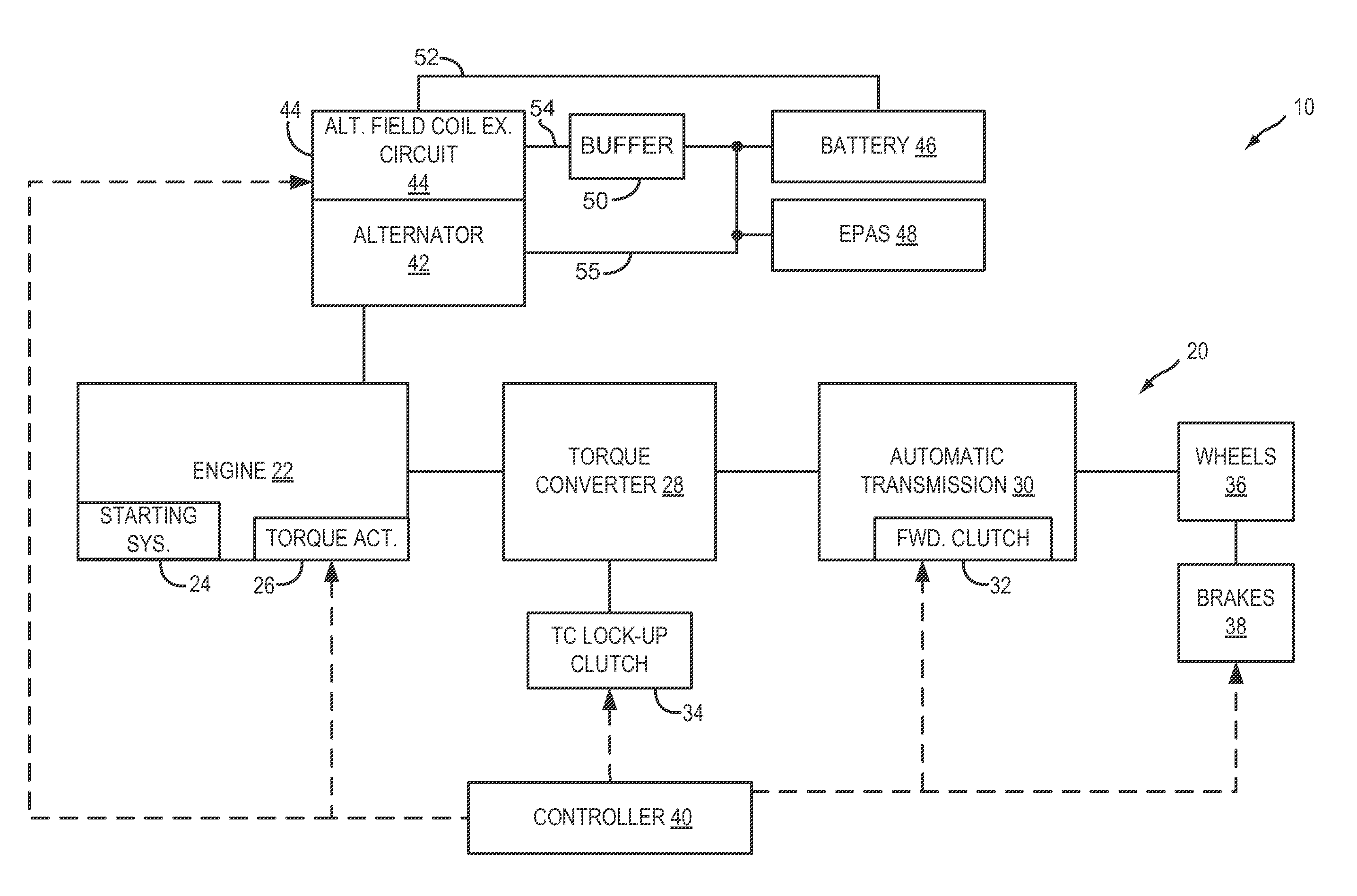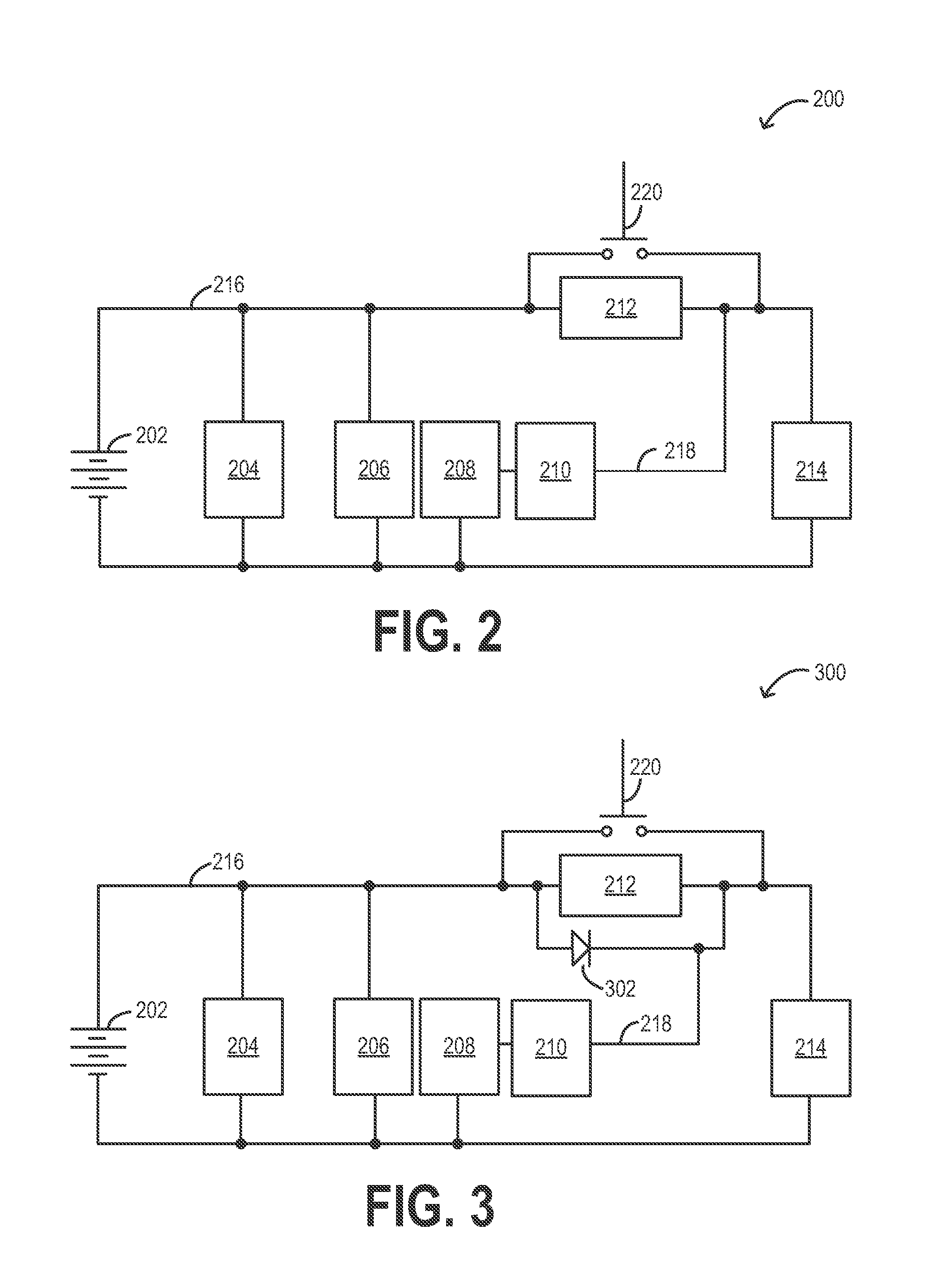[0002]Vehicles have been developed to perform an engine stop when specific engine idle-stop conditions are met and then to automatically restart the engine when restart conditions are met. Such idle-stop systems enable fuel savings, reduced exhaust emissions, reduced vehicle
noise, and the like. In some idle-stop systems, engine speed is controlled during an engine restart by loading the engine via an alternator mechanically coupled to the engine. However, during engine restarting a substantial amount of current is required by a
starter from a battery to start the engine. Consequently, when a higher amount of current is drawn from the battery, the
battery voltage may be lowered and the
mechanical load provided by the alternator to the engine may change in an unexpected and / or unpredictable manner.
[0003]One example of an engine starting
system is shown by Kusafuka et al. in U.S. Pat. No. 7,471,069. Herein, an alternator, a starter, and a
voltage raising device (e.g., a DC /
DC converter) are connected to the positive
electrode of a system battery such that during an engine restart, power from the battery is used by the starter to start the engine. At the same time, power from the DC /
DC converter is used to operate audio and navigation systems. The DC /
DC converter helps to buffer the audio and navigation systems from reduced battery voltage during engine starting by providing a regulated voltage output that is less sensitive to changes in battery voltage.
[0006]In one example, a vehicle engine starter circuit may include a battery configured to power a starter during an engine start. The battery may also be electrically coupled to a DC / DC converter (or DC / DC converter based device). The DC / DC converter may be configured to provide a regulated voltage output which may be used to power one or more electrical components and auxiliary loads during the engine start (e.g., vehicle lights, radio, etc.). A
field coil excitation circuit of an alternator may also be coupled to the output of the DC / DC converter such that the alternator
field coil excitation circuit is added as an additional load to the DC / DC converter. In one example, the field coil excitation circuit may be a linear
voltage regulator. In another example, the field coil excitation circuit may be a
pulse width modulation circuit that controls an average voltage that is applied to the alternator field coil. During an engine start, a switch arranged in parallel across the DC / DC converter may be opened so that the alternator field coil excitation circuit is electrically buffered from the battery via the DC / DC converter from start to start. Thus, during the engine start, even if the battery has aged, a substantially consistent average voltage may still be applied to the alternator field coil via the alternator field coil excitation circuit since the input to the alternator field coil excitation circuit is maintained at a substantially
constant voltage level by the DC / DC converter. Consequently, a mechanical load applied to the engine by the alternator can be made more predictable and consistent from start to start, thereby enabling improved control of engine run-up speed.
[0007]In an alternate example, the DC / DC converter may be removed and a second alternate power source (e.g. a battery) configured with a directional current flow limiting device, which limits current flow from the second alternative power source to the first battery, may be electrically coupled to the alternator field coil excitation circuit. In this way, the alternator field coil excitation circuit can be coupled to the alternate power source to a power to the alternator field such that the alternator field coil and field coil excitation circuit are electrically buffered from the main system battery. Consequently, the alternator field coil and alternator field coil excitation circuit may be buffered from the effects of
voltage droop due to battery aging and / or a degraded battery condition. By providing a more predictable and consistent alternator mechanical load to the engine during engine starting, the quality of engine restarts may be improved.
 Login to View More
Login to View More  Login to View More
Login to View More 


